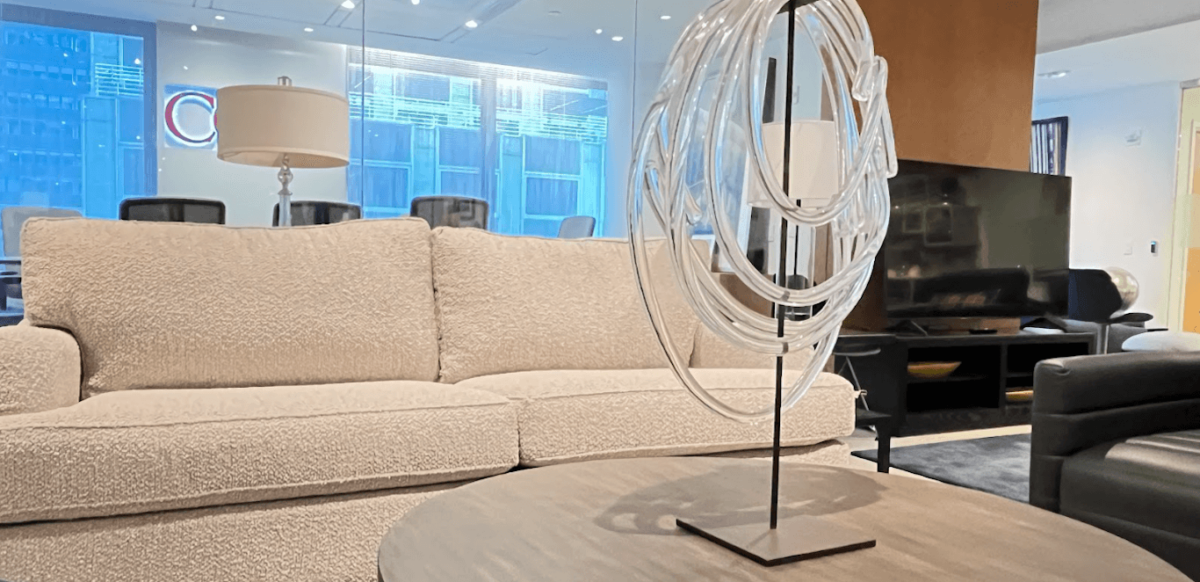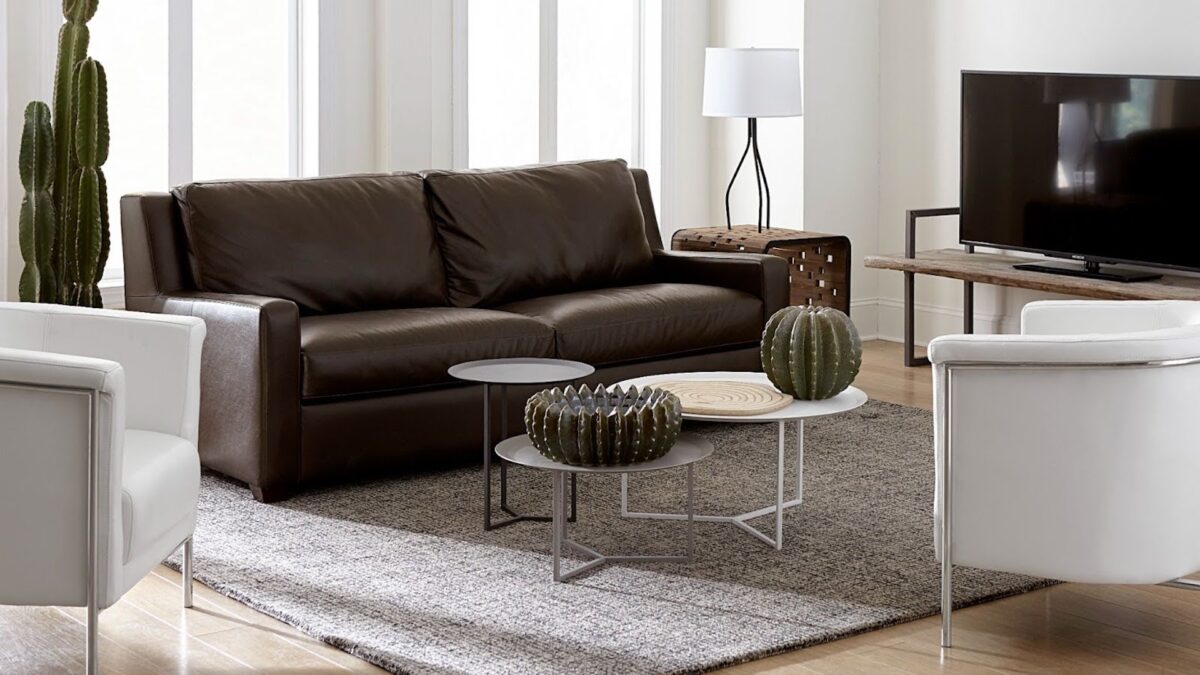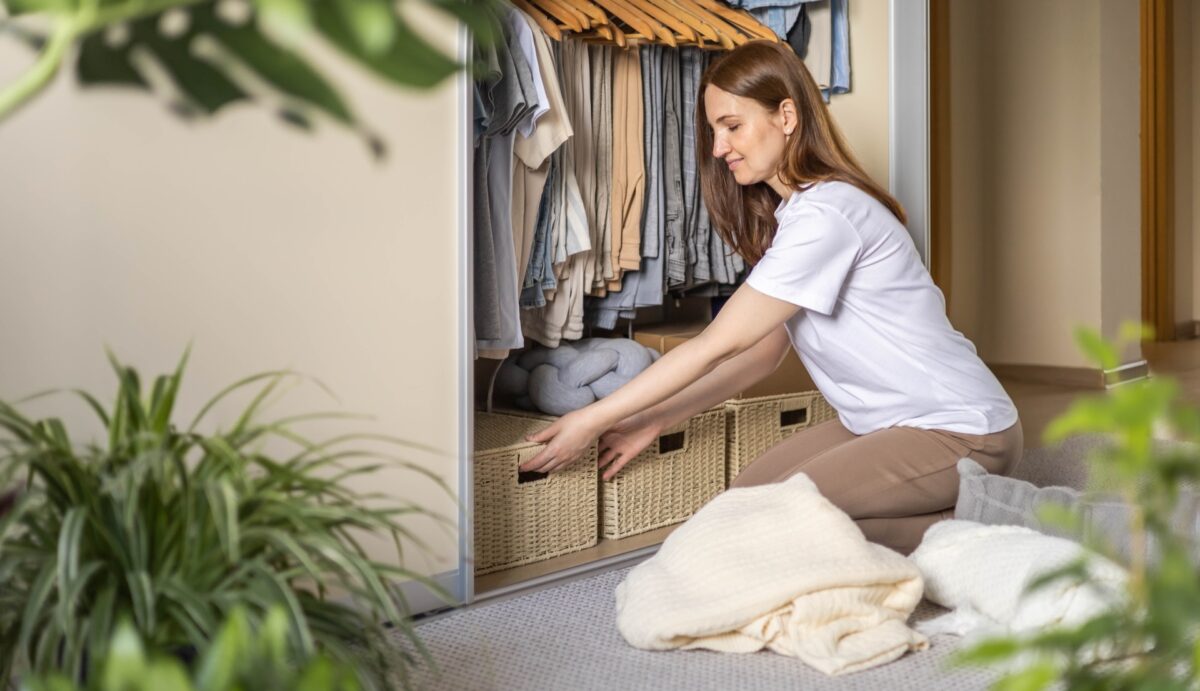A Brief History of Mid-Century Modern Design
According to AnOther Magazine, historian Cara Greenberg first used the term “mid-century modern” in her book about this particular style of design. As its name suggests, mid-century modern design refers to the most iconic style of the 1940-1960s, the one born from the “modernist” movement that dominated the decades prior.
Like its predecessor, mid-century modern design prioritizes simplicity and functionality over clutter and details. Unlike modernism, however, mid-century modernist interiors feature more decorative elements, pop of color, bohemian accents, and organic shapes.
The Historic Backdrop of Mid-Century Modern Design
My Modern MET credits the rise of the mid-century modern design to the end of World War II. As the industrial revolution took hold and Americans regained their economic confidence, many turned their attention to homeownership and modernization.
In turn, new styles and trends emerged. Many of these trending styles were heavily influenced by the Bauhaus movement of the 1920s along with popular icons of the era, including architect and developer Joseph Eichler, artists Jackson Pollock and Andy Warhol, among others.
Key Elements of Mid-Century Modern Design
Mid-century modern design “borrowed” elements from previous design movements, regional trends (e.g., Nordic Scandinavian design), and popular culture, and turned them into a single, iconic style that homeowners clamor for today. If you’re looking for ways to add MCM flair to your space, browse through the predominant elements of mid-century modern decor and furniture.
1. Mid-century modern design incorporates organic shapes.
Unlike modernist design, which relied mostly on geometric patterns and clean lines, MCM does not shy away from curves and organic shapes. In fact, one of the most iconic furnishings of the 1950s — the Eames Lounger — was modeled to give prospective sitters the welcoming “feeling of a well-used baseball mitt.” The lounger, which resembles the one pictured below, serves its function as an incredibly comfortable recliner while retaining the form of a statement-making accent chair.
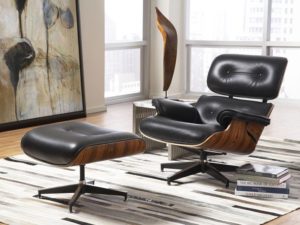
2. Mid-century modern design keeps clutter to a minimum.
Mid-century modern design doesn’t rely on trinkets and collections for style. Instead, MCM design allows the shape, texture, material, and color of a room’s essential elements to serve as decor. For instance, rather than saturating a wall with various pieces of art, a designer pursuing a mid-century modern look may opt for a simple hanging mirror or a potted tree.
3. Mid-century modern design contrasts textures and materials.
MCM design is not matchy-matchy, in fact, it is quite the opposite, using contrasting textures and materials to make a visual impact. This element of MCM design can often be seen in seating, where velvet, tweed, or leather upholstery is often perched atop polished wooden or steel frames.
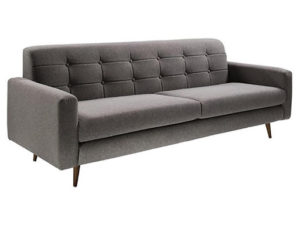
4. Mid-century color palettes are mostly neutral, with pops of color.
Earthy tones and bright neutrals are typically at the core of a mid-century modern interior’s dominating color palette. However, in keeping with MCM’s playful, mix-and-match spirit, no mid-century modern interior is complete without a pop of color. In many cases, said pops of color come in the form of a throw pillow, a single accent chair, or bold-colored wall art.
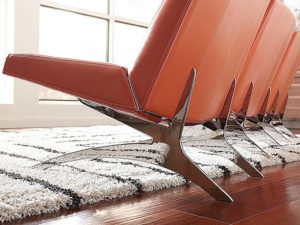
5. Mid-century modern design leverages natural and artificial lighting.
Appreciating the thoughtful design choices and contrasting textures of mid-century modern interiors requires a lot of light. Accordingly, many mid-century modern homes feature floor-to-ceiling windows, skylights, and sliding patio doors. Additionally, most MCM interiors also leverage visually-stunning forms of artificial lighting such as brass pendants, geometrical sconces, and tripod floor lamps as eye-catching elements that light up the whole room.
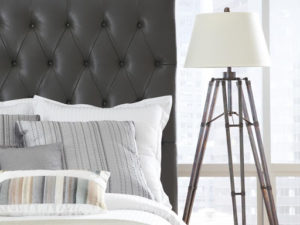
Achieving a Mid-Century Modern Aesthetic At-Home
Thanks to mid-century modern’s resurgence in popularity, you don’t have to look far to find ways to incorporate this style of design into your home (even it wasn’t designed by Frank Lloyd Wright!). However, before you load up your shopping cart with mid-century modern furnishings, consider these tips.
1. Tackle clutter first.
In mid-century modern interiors almost everything has a function, with very few items being only decorative in purpose. Accordingly, before adding more stuff to your soon-to-be-MCM interior, remove any things that don’t have a non-decorative purpose. Start with old magazines and stacks of mail before moving onto ornamental knick-knacks and nostalgic memorabilia.
2. Decide on a layout.
Depending on the size, shape, and purpose of the room you are re-doing, consider how all the necessities will be arranged within the space. Draw a tentative layout for where each furnishing will go.
3. Decide on a color palette.
Depending on the look you’re going for, you may already have an idea of the color scheme you’re going for. However, if you don’t, you can use this color palette generator from Canva to derive a list of color schemes from your favorite inspiration pictures.
4. Choose and lay out the foundational furniture.
Now that you have a tentative layout and color scheme, you know exactly which furnishings you need (and in which colors). Carefully select the items that will take up the most room in your space, such as the rug, TV stand, and upholstered seating in your living room. Ensure that each of these large investment pieces falls safely into your planned layout and color scheme.
5. Add accents with purpose.
Now that you have the foundational furniture in place, you should be able to get a better idea of what you need to further enhance the space’s style and comfort. This is the perfect opportunity to incorporate accent tables with hairpin legs, textured upholstery, or modern floor lamps into your space.
6. Remember you can always do more.
Re-decorating a room can be an exciting challenge, but don’t let yourself get too carried away, re-cluttering the space you just cleared out! Once you’ve laid the foundation for your new mid-century modern space, give yourself a break and let your design ideas simmer.
Spend some time in your new space and reflect on what else (if anything) is missing. If you decide that a pop of color or personality is missing, consider adding a few, intentional decorative accents such as wall art, indoor plants, or accent cushions
Remember, the key with mid-century modern is to prioritize function over form, and quality over quantity, so don’t get too carried away with articles of interest and decorative tchotchkes.
Get Mid-Century Modern on a Budget
Though many fast furniture companies have hopped onto the mid-century modern bandwagon, furnishing your space with low-quality, low-cost pieces won’t give it the vintage-but-contemporary appeal of this interior decor style. Shop a range of gently-used furnishings and accent pieces with mid-century modern pieces that are built-to-last and impress at your local CORT Furniture Outlet!



